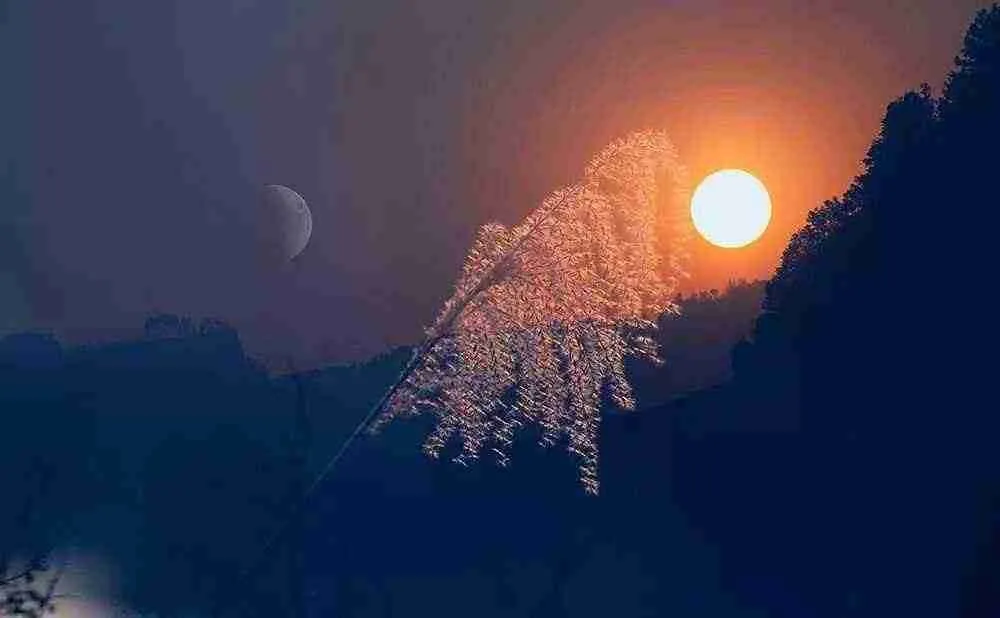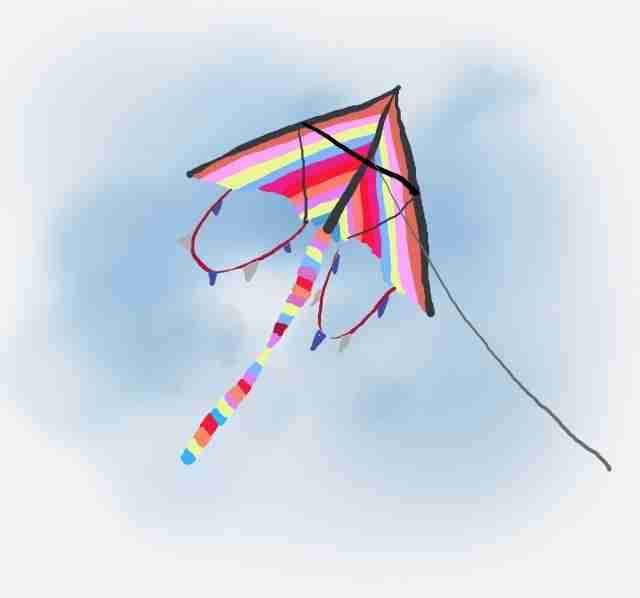Autumnal Equinox is one of the twenty-four solar terms in China and marks the fourth solar term of the autumn season. It typically falls on September 22nd or 23rd in the Gregorian calendar. The arrival of this solar term signifies that autumn is already halfway through, with the weather gradually becoming cooler and the duration of day and night gradually becoming equal.
what date is the autumn equinox?
The Autumnal Equinox is an important solar term that has a significant impact on people’s lives and agricultural production. Before the Autumnal Equinox, temperatures gradually drop, the weather becomes drier, and the temperature difference between day and night increases. After the Autumnal Equinox, the daylight hours in the northern hemisphere gradually shorten, while the nighttime hours lengthen, leading up to the winter solstice.

The Autumnal Equinox also has a substantial influence on people’s daily lives. After this solar term, the weather becomes cooler, prompting people to start wearing warmer clothing. Additionally, it is a time for nourishment, often referred to as ‘autumn replenishment.’ People consume nutritious foods such as chicken soup and fish soup to nourish their bodies.
Chinese autumn equinox history
The name “Autumnal Equinox” derives from ancient astronomical concepts. Ancient Chinese believed that during the Autumnal Equinox, the sun’s zenith was situated on the equator, resulting in equal daytime and nighttime durations. This phenomenon was termed “Autumnal Equinox.” The Autumnal Equinox has a long history in China and was already an important solar term during the Warring States period.
In ancient China, the Autumnal Equinox held significance as a crucial agricultural solar term. After the Autumnal Equinox, the weather gradually cooled, prompting farmers to begin harvesting crops and preparing for the winter. It was also a time for rituals and offerings, as people believed that on this day, there was a connection between the energies of heaven and earth, representing a boundary between the earthly realm and the divine. Consequently, ceremonies and prayers were conducted to seek the blessings of spirits.
Chinese autumn equinox Meteorological changes
In the lunar calendar, “立秋 (Liqiu)” marks the beginning of autumn, while “霜降 (Shuangjiang)” signifies the end of autumn. “秋分 (Qiufen)” falls exactly midway between these two points, spanning 90 days from Liqiu to Shuangjiang. From the day of Qiufen, the climate exhibits three main characteristics: the direct position of the sunlight continues to shift southward from the equator to the southern hemisphere, the phenomenon of shorter days and longer nights becomes increasingly apparent in the northern hemisphere, with days gradually shortening and nights lengthening (until reaching the longest night and shortest day on the Winter Solstice); and the temperature difference between daytime and nighttime gradually intensifies. In the southern hemisphere, the opposite occurs.
During the Qiufen season, vast regions north of the Yangtze River in China enter the autumn season, as per the division based on the “average temperature.” The daily average temperatures drop below 22°C. Cold air masses in the northern regions begin to exert their influence, and in most areas, the rainy season has just ended. A cool breeze prevails, the skies are clear, and the days are sunny, offering crisp and pleasant autumn weather. After Qiufen, the direct position of the sun shifts to the southern hemisphere, resulting in a reduced solar radiation received by the northern hemisphere. Meanwhile, the Earth continues to lose heat, causing a noticeable acceleration in the decrease of temperatures. As the saying goes in agriculture, “One autumn rain brings one cold,” and “White dew on the night of Qiufen, one night cold, one night.”
Chinese autumn equinox Agricultural activities
The rapid temperature drop in autumn has made the “Three Autumn Health Seasons,” which include autumn harvesting, autumn plowing, and autumn sowing, particularly busy and demanding. During the Autumnal Equinox, cotton begins to produce bolls, and tobacco leaves transition from green to yellow, making it an excellent time for harvesting. In the North China region, winter wheat planting has already commenced, while in the Yangtze River basin and the southern regions, there’s a rush to harvest late-season rice, prepare the fields, and get ready for rapeseed planting.
The Autumnal Equinox season is characterized by the risk of drought or continuous overcast and rainy weather, which can adversely affect the smooth progress of the “Three Autumn” activities. Prolonged rainy periods, in particular, can lead to lodging, mold, or germination of crops, resulting in significant losses. Success in the “Three Autumn” tasks hinges on being proactive and early. Timely harvesting of autumn crops can help mitigate the risks of early frost and prolonged rainfall. Planting winter crops at the right time allows for the efficient utilization of pre-winter heat resources, nurturing strong seedlings for safe overwintering and setting the stage for a bountiful harvest in the coming year.
Wheat: Prior to planting, select and treat wheat seeds carefully, conduct germination tests, and ensure even seedling emergence. In North China, winter wheat planting begins, and post-planting management focuses on achieving uniform seedling growth.
Garlic: Sow garlic at the appropriate time according to local climate conditions. Implement timely weed and disease control, apply supplementary fertilizers to promote growth, and manage moisture levels in the soil. Perform activities such as hilling and loosening the soil as needed.
Late-season Rice: After panicle initiation in late-season rice, as temperatures gradually drop, root absorption capacity diminishes while the panicles continue nutrient accumulation. Hence, continued fertilization is essential.
Apples: Apples are currently in the maturation and harvesting phase. Timely harvesting should be followed by autumn pruning, basal fertilization, soil turning, and pesticide application for disease and pest control.
Strawberries: Winter strawberries are entering the budding stage. Implement timely fertilization and irrigation, cultivate the soil, remove weeds, thin out flower buds as necessary, use plastic mulch cover, and engage in disease and pest control.
Cotton: During the Autumnal Equinox, cotton starts to produce bolls. Harvest the new cotton in stages, following the “Four Divisions and Four Rapid Actions” principle: divide the harvest, divide the sun-drying, divide the storage, and divide the sale; and do so quickly to enhance cotton quality.
Rapeseed: Prepare fields for rapeseed planting by seizing sunny opportunities for soil preparation. Create quality seedbeds for rapeseed, start early seedbed preparation by late September, and maintain proper seedling management. Plant early and provide timely fertilization and irrigation.
what happens at autumn equinox
Autumnal Equinox is one of the twenty-four solar terms, marking the fourth solar term of the autumn season, typically falling on September 22nd or 23rd in the Gregorian calendar. Its arrival signals that autumn is already more than halfway through, with the weather gradually becoming cooler, and the duration of day and night gradually equalizing.
During the Autumnal Equinox period, temperatures steadily decrease, the weather becomes increasingly dry, and the temperature difference between day and night intensifies. On the day of the Autumnal Equinox, the lengths of daytime and nighttime are equal, each lasting 12 hours. Because the Autumnal Equinox falls right in the middle of the autumn season, it is called ‘Autumnal Equinox.’
Autumnal Equinox also significantly influences people’s lives. After this solar term, the weather progressively cools, prompting people to don thicker clothing. Additionally, it is a season for nourishment, with a tradition known as ‘autumn supplementation.’ People consume nutritious foods like chicken soup, fish soup, and others to nourish their bodies.
Furthermore, the Autumnal Equinox is associated with various special customs, such as the tradition of ‘standing eggs’ and the consumption of ‘tangyuan’ (sweet glutinous rice balls). The ‘standing eggs’ activity symbolizes people’s reverence and respect for life and fertility. Another interesting folk tradition, ‘sticking bird beaks,’ is associated with the Spring Equinox.
In summary, the Autumnal Equinox is an important solar term with significant implications for people’s lives and agricultural activities.
Chinese autumn equinox customs
Traditional Customs of the Autumn Equinox Festival
Worshiping the Moon

In ancient times, the earliest moon-worshiping festival was associated with the Autumn Equinox. However, the date of the Autumn Equinox is determined by the sun’s position, so it may not always coincide with a full moon. Eventually, this tradition evolved into the Mid-Autumn Festival, which is specifically celebrated on the 15th day of the eighth lunar month when the moon is full.
Eating Autumn Greens
In the Lingnan region of China, it is customary to eat “autumn greens” during the Autumn Equinox. These greens are a type of wild amaranth, known locally as “autumn bihao.” The leaves are green and purple, and they are often used to make a delicious soup known as “autumn soup.” It is believed that consuming these greens brings good health, as they are rich in nutrients.
Offering Autumn Oxen
During the Autumn Equinox, there is a tradition of offering symbolic “autumn oxen” or “autumn cattle” to households. These offerings typically include decorative paper images featuring the Chinese lunar calendar’s agricultural festivals and scenes of farmers working in the fields. These images are called “autumn cattle pictures.” Folk performers, known as “autumn officials,” visit homes to deliver these images and share auspicious words related to autumn farming and good fortune. It is customary for the hosts to give them money as a token of appreciation. The spoken verses delivered by the “autumn officials” are often poetic and enjoyable.
Sticking Bird Beaks
During the Autumn Equinox, people in many regions take a break from work and make rice dumplings. Additionally, they make several rice dumplings without fillings, often referred to as “bird beaks.” These rice dumplings are placed outdoors, often on the edges of fields, to prevent birds from damaging the crops. The idea is that birds will eat the rice dumplings and become unable to harm the fields.
Flying Kites

The Autumn Equinox is an ideal time for flying kites due to the favorable weather conditions. Various types of kites, such as rectangular kites, fish-shaped kites, butterfly kites, dragonfly kites, and crescent moon kites, are flown during this period. Some kites can reach heights of up to two meters, while smaller ones are around two to three feet long.
Making “Face Sparrows” and Eating Them
In the past, people would use glutinous rice flour to make dough, which they molded into small bird-shaped figures known as “face sparrows.” These figures were then steamed or boiled and eaten. This practice was common during the Autumn Equinox as it symbolized the approaching harvest season. It was believed that making and consuming “face sparrows” would bring good luck and ensure a bountiful harvest.
These customs associated with the Autumn Equinox have been passed down through generations and are deeply rooted in Chinese culture. They reflect people’s deep connection to nature, their agricultural heritage, and their hopes for prosperity and well-being. These traditions continue to be observed and cherished in modern times, preserving a rich cultural heritage.
how are the spring equinox and the autumn equinox alike?
The Spring Equinox and the Autumn Equinox are both part of the twenty-four solar terms, and they share several similarities:
Equal Day and Night: On both the Spring Equinox and the Autumn Equinox, the duration of daytime and nighttime is approximately equal, each lasting for about 12 hours. This is one of their most prominent characteristics.
Seasonal Significance: The Spring Equinox marks the beginning of the spring season, while the Autumn Equinox marks the start of the autumn season.
Temperature Changes: During the times of the Spring Equinox and the Autumn Equinox, noticeable temperature changes occur. After the Spring Equinox, the weather gradually warms up as temperatures rise, while after the Autumn Equinox, the weather starts to cool down, and temperatures begin to drop.
Impact on Agriculture: Both the Spring Equinox and the Autumn Equinox have significant effects on agricultural activities. The Spring Equinox signifies the commencement of farming activities, while the Autumn Equinox represents the harvest season.
Seasonal Traditions: These two solar terms are associated with various traditional customs. For example, during the Spring Equinox, people engage in activities such as flying kites and eating spring pancakes, while during the Autumn Equinox, people often enjoy moon-viewing and consume mooncakes, among other traditions.
In summary, the Spring Equinox and the Autumn Equinox are important solar terms with many similarities in terms of their solar term characteristics, temperature fluctuations, impact on agriculture, and associated cultural traditions.
what does it mean to be born on the autumn equinox?
People born during the Autumnal Equinox are characterized by a positive and enthusiastic nature, self-confidence, and a competitive spirit. They approach their studies with great dedication and have a strong aptitude for learning, often becoming excellent students. Furthermore, they tend to achieve success in both their careers and family life, with favorable financial prospects. However, it’s worth noting that their excessive self-assuredness at times can lead to overly aggressive behavior, which may result in conflicts. The information provided is for reference only, as individual personalities and fortunes are influenced by personal circumstances.
reference
- Press Conference on “Chinese Farmers’ Harvest Festival” Held – China Government Website [Accessed on April 26, 2021]
- This Year’s “Autumn Equinox” the “Earliest” in 124 Years – Xinhua News Agency [Accessed on September 21, 2020]
- Twenty-Four Solar Terms – Autumn Equinox – China Meteorological Administration [Accessed on April 26, 2021]
- Sending Autumn Oxen – Official Website of the China Meteorological Administration [Accessed on April 26, 2021]
- Various Customs of the Autumn Equinox Solar Term – China Civilization Net, September 21, 2011 [Accessed on April 26, 2021]
- Shifu and Han Xinyu, Eds. “Essential Knowledge of China’s 24 Solar Terms.” Zhengzhou: Central Plains Farmers Press, September 2010, pp. 245–246.
- Hu Zhenguo, Ed. “Solar Terms, Farming, and Farming Proverbs.” Shandong: Shandong Science and Technology Press, 1998, pp. 127–128.
- Shifu and Han Xinyu, Eds. “Essential Knowledge of China’s 24 Solar Terms.” Zhengzhou: Central Plains Farmers Press, September 2010, p. 255.
- Shifu and Han Xinyu, Eds. “Essential Knowledge of China’s 24 Solar Terms.” Zhengzhou: Central Plains Farmers Press, September 2010, p. 256.
- Xu Yanlai, Ed. “Knowledge of the Twenty-Four Solar Terms.” Tianjin: Tianjin Science and Technology Press, January 2013, p. 296.
